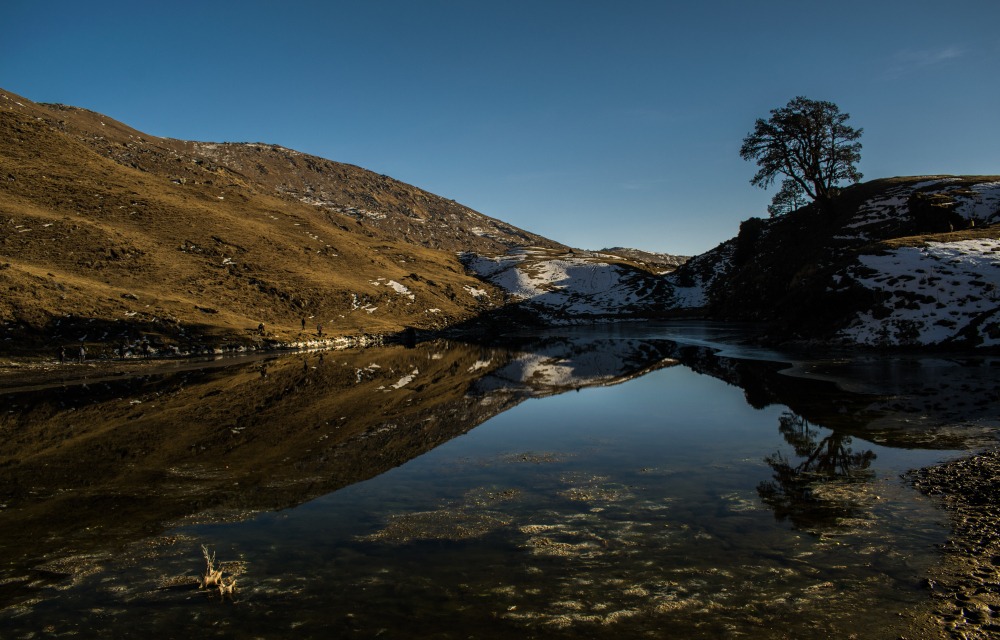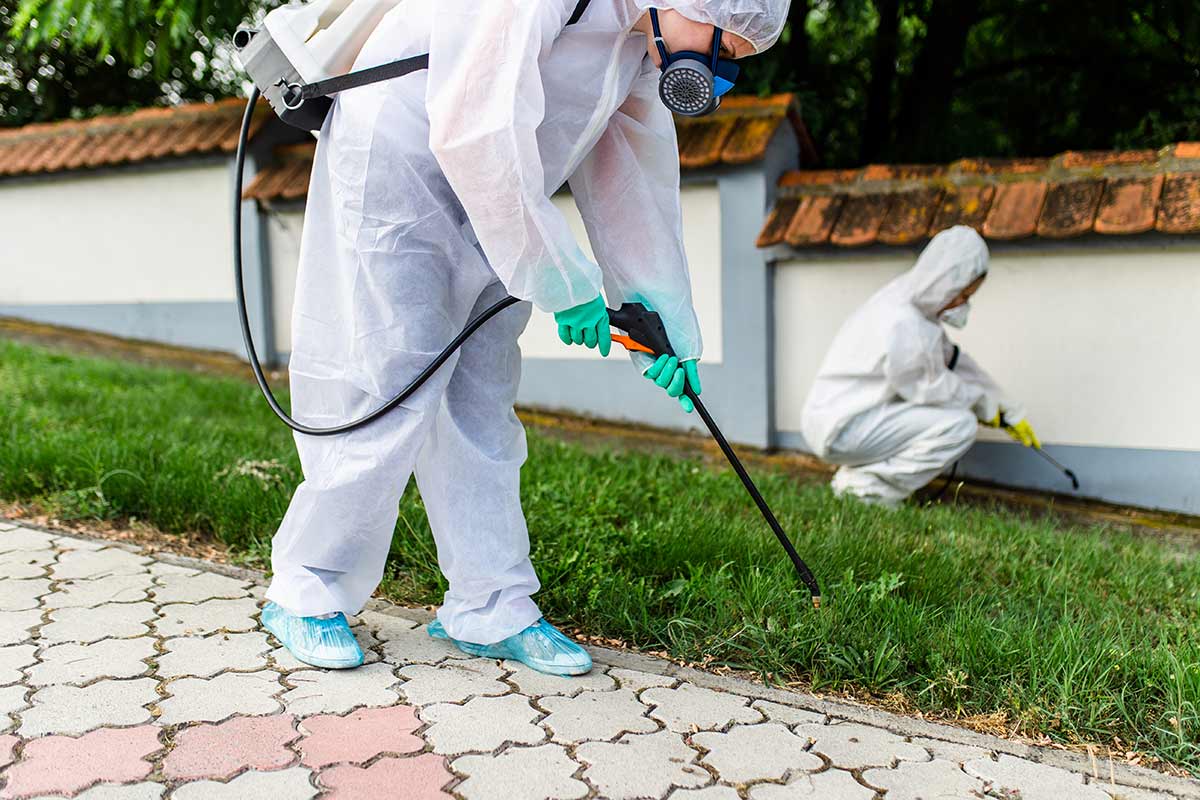Introduction: Why Packing Right Can Make or Break Your Brahmatal Trek
When I first signed up for the Brahmatal Trek, I was beyond excited. The thought of trekking through snow-clad paths, camping under a starry sky, and reaching the summit of one of the most beautiful treks in India filled me with anticipation. But as I started to prepare, one thing became crystal clear—packing was going to be a challenge. Not just any challenge, but a “what-do-I-bring-so-I-don’t-freeze-and-actually-enjoy-my-trek” kind of challenge.
And I wasn’t alone in this. Many first-timers (and even experienced trekkers) struggle with packing for a trek like Brahmatal, especially when you’re dealing with high-altitude conditions, fluctuating temperatures, and unpredictable weather. Trust me, there’s no one-size-fits-all solution. But after my trek, I realized one thing: packing smart can truly make or break your experience.
In this guide, I’ll walk you through exactly what to pack for Brahmatal, why each item is important, and some pro tips I learned along the way. Let’s dive in!
1. Understanding the Brahmatal Trek: Why Packing Smart Matters
Before I even got started with packing, I took a moment to understand what the Brahmatal Trek really entailed. Knowing the terrain and weather helped me make better packing decisions. Here’s what I learned:
The Weather—Cold, Colder, Coldest
The weather on the Brahmatal Trek can be harsh, especially in winter. Temperatures drop well below freezing as you gain altitude. But here’s the kicker: while it can be freezing at higher altitudes, it’s relatively mild at the base. This means you’ll need gear that can handle extreme cold and moderate warmth at different points during the trek. If you pack the wrong layers, you’ll end up either roasting or freezing.
The trick is to be prepared for sudden weather changes. When I was trekking, the mornings were clear and crisp, but by the afternoon, it could snow. At times, I had to adjust my gear quickly when the weather shifted unexpectedly. This is why I cannot emphasize enough the importance of waterproof outer layers and warm mid-layers—they are absolute game-changers. So, make sure your gear is versatile enough to deal with these temperature fluctuations, and always expect the unexpected. Trust me, it’s better to be over-prepared than to freeze your toes off halfway up the trail.
Trek Duration—Be Ready for the Long Haul
The Brahmatal Trek typically lasts 6 to 7 days, and during this time, you’ll be moving through snow-covered meadows, dense oak and rhododendron forests, and steep inclines. It’s not a casual walk in the park—the trek demands durable gear that can withstand tough conditions while providing comfort and warmth.
Each day, you’ll cover significant distances, sometimes climbing steep sections and other times navigating snow-filled fields. After several days of trekking, your gear will really start to feel the strain. A sturdy, well-made backpack is necessary to transport all of your equipment. Packing light is important too, but sturdy and reliable gear is non-negotiable. Choose items that not only last for the duration of the trek but that also offer comfort during the long hours of walking, and invest in high-quality sleeping gear to ensure restful nights. After a long, exhausting day of trekking, there’s nothing better than slipping into a comfortable sleeping bag!
Terrain—Think Rugged and Snowy
Whether you’re trudging through ankle-deep snow or navigating rocky paths, Brahmatal can be a rough ride for your gear. You need footwear that won’t slip, jackets that won’t tear easily, and a pack that can hold everything securely. The terrain isn’t something you want to underestimate. So, every item you pack should serve a specific, practical purpose.
The combination of snowy, icy patches and rocky stretches makes the trail difficult at times. In some sections, you’ll feel like you’re hiking through a winter wonderland, while in others, the trail can get a little tricky due to exposed rocks or muddy sections. Trekking poles and sturdy footwear will provide the stability you need. At times, I was glad to have my ankle-high boots and trekking poles, especially when tackling steep, slippery slopes where a single misstep could lead to a fall. So, don’t just pack shoes that look good—choose ones that can handle rough terrain and keep your feet safe! If you’re looking for expert guidance and top-notch service on the Brahmatal Trek, I highly recommend The Searching Souls. With years of experience in organizing Himalayan treks, they offer an all-inclusive package that ensures your comfort, safety, and enjoyment from start to finish. Their experienced guides know the trail inside out, and their attention to detail in gear, food, and support makes the journey smooth and unforgettable.
2. What to Pack for Brahmatal: The Essentials
Now that we have a sense of the trek’s challenges, let’s talk about the essentials—the items you absolutely can’t leave behind. These are the things that will keep you warm, dry, and safe on your trek.
Clothing Layers: Master the Art of Layering
Here’s something I wish I’d understood better before heading out: Layering is key. Wearing multiple layers gives you flexibility to adjust your clothing based on the weather, your activity level, and how high you are on the trek. Here’s a breakdown of the layers I packed:
-
Base Layer: This is your moisture-wicking layer (think long-sleeve shirts and thermal leggings). These keep sweat off your skin and help prevent chills. I opted for merino wool base layers, which are breathable, moisture-wicking, and odor-resistant, meaning I didn’t have to worry too much about smells on the trek.
-
Mid Layer: I packed a fleece jacket or a down vest. This is your insulating layer that traps body heat. Down is lighter and more compressible, making it great for high-altitude treks where weight matters. My fleece jacket was a lifesaver, and it worked well when I needed to balance comfort and warmth.
-
Outer Layer: A waterproof, windproof jacket and pants are a must. Gore-Tex jackets or similar waterproof materials work best to keep rain and snow out while allowing breathability. I also added a windproof layer for those strong gusts at higher altitudes. This outer layer will be your shield against the harsh weather, so it’s worth investing in something high-quality.
Packing a balaclava and neck gaiter was a lifesaver for those extra cold days at higher altitudes. The balaclava fit snugly under my helmet (on snow days) and kept my face protected, while the gaiter was excellent for covering my neck and face during windy conditions.
Trekking Pants and Shorts: Comfort is Key
I found breathable, quick-drying trekking pants to be essential for the Brahmatal Trek. You don’t want pants that get soaked easily. As the weather varies, you might end up sweating on the way up but need warmth on the way down. Some trekkers swear by convertible pants (ones that can turn into shorts), but I preferred sticking with pants that allowed freedom of movement.
When it comes to trekking pants, flexibility is everything. Look for pants with articulated knees and stretchable fabric that move with your body. I also made sure to pack an extra pair of pants in case I got wet or cold. Remember, it’s not just about comfort—it’s also about durability. I went for pants with reinforced knees, which held up well against rough patches on the trail.
While I didn’t use shorts often during the trek, they are a good idea if you’re trekking in milder temperatures or if you’re planning to camp at lower altitudes. However, in winter conditions like those at Brahmatal, I kept my pants on to stay warm and dry.
3. Footwear: Choosing the Right Shoes and Socks
I can’t stress this enough—your shoes are your lifeline on this trek. Bad footwear can not only cause blisters but can also be dangerous on slippery, icy patches. Here’s what I packed and why it worked:
Waterproof Trekking Boots
I chose waterproof trekking boots with good ankle support. As you ascend and descend the trail, you’ll be walking through snow, ice, and slush, so boots that are both waterproof and insulated are essential. The boots need to be sturdy enough to navigate uneven ground but also light enough for long-distance comfort.
Choosing the right boots isn’t just about comfort; it’s about protection. I went for boots with a Vibram sole, which gave me extra grip and traction on slippery surfaces. The waterproof lining kept my feet dry even when crossing streams or walking through wet snow, preventing any discomfort from soggy feet.
Thermal and Moisture-Wicking Socks
Don’t even think about packing regular cotton socks. Moisture-wicking, thermal socks are a must for keeping your feet dry and warm. I packed at least 3 pairs, ensuring I had one for every day of the trek plus a backup in case any got wet.
The socks I used were specifically designed for hiking and trekking. Not only did they wick away moisture, but they also provided extra warmth due to their merino wool composition. Wool also has the added benefit of being odor-resistant, meaning I didn’t have to deal with that “wet sock smell” after a full day on the trail. Plus, the extra padding around the heels and toes really helped prevent blisters.
4. Trekking Gear: Must-Have Items for Comfort and Safety
Beyond clothing, there are several pieces of trekking gear you’ll need to ensure safety, comfort, and overall enjoyment.
Backpack and Sleeping Bag
I carried a 40-50L backpack with a good waist strap for weight distribution. Compression sacks for sleeping bags and clothes can save you a ton of space. Speaking of sleeping bags—since the temperatures can plummet, make sure to bring a 4-season sleeping bag rated for at least -10°C. It’ll keep you warm even in the coldest of nights.
A high-quality backpack is a game-changer, especially on a multi-day trek like Brahmatal. Choose one with a ventilated back panel and comfortable shoulder straps. This will ensure comfort during the long, challenging hours on the trail. Sleeping bags are also extremely important—don’t skimp on this one. Your sleep quality will directly affect your energy levels during the trek.
Trekking Poles
For a trek like Brahmatal, trekking poles are invaluable. They provide stability, especially on icy or snowy stretches, and reduce the strain on your knees during steep climbs and descents. They also help distribute your weight, giving your legs a bit of a break.
I was initially skeptical about trekking poles, but once I used them, I couldn’t imagine trekking without them. Whether crossing a stream or descending a rocky slope, my poles offered extra support and helped me keep my balance. Trust me—they’re worth the extra weight!
Headlamp and Extra Batteries
I can’t tell you how many times I relied on my headlamp during the trek. Whether you’re starting early before sunrise or finishing after sunset, a headlamp is non-negotiable. Don’t forget to pack extra batteries—they’re lightweight and could save you from the dreaded situation of a dead lamp in the dark.
5. Food and Hydration: Keep Your Energy Up
What you eat and drink on the Brahmatal Trek plays a significant role in maintaining your energy levels. Here’s how I stayed fueled during the trek:
Water Bottle and Hydration System
You’ll need to stay hydrated, even in the cold. Insulated water bottles are great, as they prevent your water from freezing. I also carried a hydration pack to sip water easily while on the move.
Staying hydrated is one of those things you may overlook, but in extreme conditions, dehydration can set in fast. When you’re trekking at higher altitudes, it’s easy to forget to drink water since you don’t feel as thirsty as in warmer weather. But don’t fall into that trap. I made sure to stop every hour or so to drink, even if I didn’t feel thirsty. Electrolyte-replenishing drinks were also crucial for keeping my energy levels stable. I packed some hydration powders that I added to my water bottle. They helped replenish the salts I was sweating out and made a noticeable difference in my energy levels, especially during the grueling ascent.
Snacks and High-Energy Foods
Alongside regular meals, I packed a variety of snacks like trail mix, energy bars, and chocolate. These were lifesavers when I needed a quick energy boost between breaks. Maintaining your energy levels is important because trekking in the cold consumes a lot of calories. Don’t forget to pack electrolyte tablets to keep your salt levels balanced.
When you’re hiking for hours each day, the need for quick, accessible energy is real. Trail mix (with a good mix of nuts, dried fruits, and seeds) was my go-to snack. It’s lightweight, doesn’t spoil easily, and provides a quick burst of energy. I also carried energy gels and granola bars, which are compact and easy to eat while on the move. The best part? These snacks were incredibly easy to pack and didn’t take up much space in my backpack, but they made a huge difference during those long stretches where you just want something to eat, but don’t want to stop for too long.
6. First-Aid Kit and Safety Gear: Always Be Prepared
One of the most important things you can do is prepare for the unexpected. While it’s unlikely that you’ll face major health issues during the trek, carrying a small, lightweight first-aid kit is essential. Here’s a list of what I packed for safety:
First-Aid Kit Essentials
- Pain relievers: For headaches, muscle soreness, or minor injuries.
- Bandages and gauze: In case of small cuts or blisters.
- Antiseptic cream: To prevent infections from any minor injuries.
- Anti-nausea or diarrhea medication: Always carry something for stomach issues, as altitude sickness or bad food can affect you.
- Altitude sickness tablets: These can be life-saving for preventing AMS (Acute Mountain Sickness) at high altitudes.
Packing a comprehensive first-aid kit may seem like overkill, but believe me, when you’re out in the wild, you’ll be glad you had it. In the high altitudes of Brahmatal, a small headache or a minor issue like a blister can escalate quickly if not treated. I also packed blister plasters—these worked wonders on my feet and prevented any irritation from slowing me down. One thing I learned the hard way is that the quicker you treat a small issue, the less likely it is to ruin your trek.
Safety Gear
In addition to the first-aid kit, safety gear like a whistle or signal mirror can be essential in case you get lost or need assistance. I also carried a multi-tool with a knife, which came in handy for food prep or cutting through small obstacles along the trail. These small items can make a world of difference and don’t add much weight to your pack.
Don’t forget to pack some sunscreen and lip balm with SPF. The higher you go, the more intense the sun becomes. Even in cold temperatures, you’re still at risk of sunburn. I also packed sunglasses with UV protection, as the glare off the snow can be harsh on your eyes.
7. Sleeping and Camping Gear: Comfort is Key for Restful Nights
Getting proper rest is key to enjoying your trek, and for that, you need to pack quality sleeping gear. Trust me, I learned this lesson the hard way when I was uncomfortable at night because I didn’t have the right setup.
Sleeping Bag and Mat
As I mentioned before, a 4-season sleeping bag is crucial for Brahmatal. At night, the temperatures can drop significantly, so having the right insulation is vital. I chose a down-filled sleeping bag because of its warmth-to-weight ratio. It was lightweight enough not to add too much bulk to my pack, but it kept me warm throughout the night. A sleeping bag liner can also help if you want extra warmth or cleanliness, especially since trekking can get quite dusty and sweaty.
I paired the sleeping bag with a sleeping mat. While it’s tempting to leave this behind in favor of packing lighter, I’ll tell you right now—it’s not worth it. The ground can be cold and uneven, and having a mat adds a significant layer of insulation between you and the freezing earth. I opted for an inflatable sleeping mat that packed down small but provided excellent cushioning and warmth.
Tent or Camping Gear
Most of the trekking operators provide tents, but if you’re trekking independently, be sure to pack a lightweight 2-person tent with weather-resistant features. It’s important that your tent is not just light, but durable enough to withstand rain or snowfall. I also carried a small camping stove to cook my own meals, though many trekkers use the stove provided by their operators.
When you’re trekking in areas like Brahmatal, your nights can be cold, and the weather unpredictable. Having a quality tent and sleeping gear makes a huge difference to your overall comfort. After a long day of walking through the snow and up steep trails, I was always grateful for my cozy setup that let me rest well and prepare for the next day’s challenge.
8. Technology and Communication: Stay Connected (If Needed)
While the Brahmatal Trek isn’t exactly a digital detox, it’s still important to plan ahead for communication and tech needs.
Mobile Phone and Power Bank
While I didn’t rely on my phone for the majority of the trek, I carried it for emergency purposes and to capture photos of the stunning views. However, battery life can be a concern due to the cold temperatures. Cold weather drains your phone battery faster than you think. I made sure to pack a portable power bank to recharge my phone during breaks. Choose one with enough capacity to charge your phone at least once or twice.
Portable Charger for Camera and Gadgets
If you’re a photography enthusiast like me, you’ll need to keep your camera charged too. A small solar charger or a power bank with multiple outputs can be invaluable, especially if you’re trekking in areas without electricity. Just be aware that charging devices in cold temperatures can be tricky, so keep your electronics close to your body to prevent them from freezing and draining faster.
GPS Device and Maps
Although the trail is well-marked, I still carried a handheld GPS for navigation. Offline maps on your phone can also be helpful for understanding your location and making decisions about which paths to take. A map and compass are old-school but incredibly reliable. With your phone acting as a secondary device, having a primary, non-electronic method of navigation can be crucial.
9. Mental and Physical Preparation: The Power of a Positive Mindset
Packing the right gear is only half of the equation. To truly enjoy Brahmatal, it’s important to mentally and physically prepare yourself for the challenges.
Physical Conditioning
I made sure to train before the trek by hiking regularly with a loaded backpack and doing some strength training. The steep ascents and snow-covered trails can be demanding, so it’s important to have the stamina to handle it. Focus on strengthening your legs and core to maintain balance and prevent fatigue. Some cardiovascular conditioning, like running or cycling, is also helpful to build endurance for those long days on the trail.
Mental Readiness
Trekking at high altitudes can be physically demanding and mentally exhausting. There were moments when the weather turned grim, and I felt like giving up. The key to success was maintaining a positive mindset and taking it one step at a time. I kept reminding myself that the struggle was temporary, but the rewards of reaching the summit would last forever. Having a supportive trekking group can also help keep your spirits high. I found that motivating each other during tough times made the trek much more enjoyable.
Conclusion: Packing Smart for Brahmatal—The Key to Enjoying the Trek
The Brahmatal Trek is one of the most rewarding treks I’ve ever done, but packing for it can be tricky. By ensuring that you have the right gear—especially clothing, footwear, safety gear, and hydration—you’ll not only survive the trek, but you’ll enjoy every challenging moment along the way. The key is to pack light but well, focus on versatility, and think ahead about how each item will contribute to your overall comfort and safety.
Trust me, when you have all the right equipment, there’s nothing that can stop you from enjoying the stunning views, the fresh mountain air, and the sense of accomplishment that comes from conquering Brahmatal.
FAQs:
-
What type of weather should I expect on the Brahmatal Trek?
- The weather in Brahmatal can vary. It’s cold, even in summer, with the possibility of snow in winter. Expect temperatures as low as -10°C during nights at higher altitudes.
-
Do I need to be physically fit for this trek?
- While the Brahmatal Trek is accessible to beginners, a basic level of fitness will make the trek much more enjoyable. It’s recommended to do some preparatory hikes with a loaded backpack before your trip.
-
Is it safe to trek alone in Brahmatal?
- While Brahmatal is a popular trekking route, trekking alone can be risky due to weather conditions and remoteness. It’s best to trek with a guide or in a group.
-
How many days does the Brahmatal Trek take?
- The trek generally takes about 6-7 days, depending on your pace and the weather conditions.
-
What’s the best time to go on the Brahmatal Trek?
- The best times to trek are December to March for snow lovers or April-May and September-November for milder weather.




